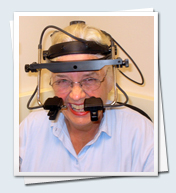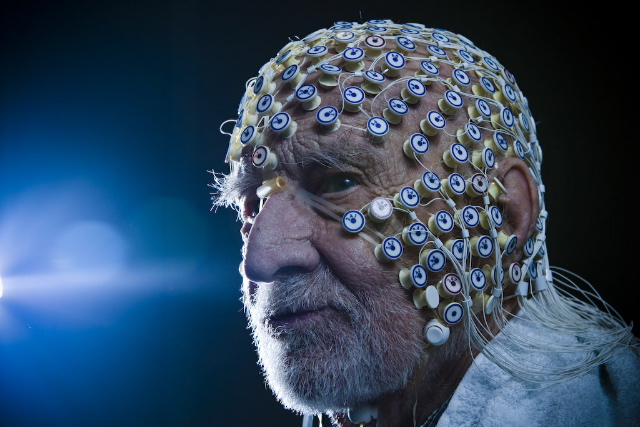Aging & Vision
Volunteering
We currently are recruiting participants for behavioural and neuroimaging studies of aging and vision. Participants should be 60 years of age or older, with healthy vision (i.e., no cataracts, glaucoma, or macular degeneration). If you are interested in participating, please contact Hailey Wright at 905-525-9140 x24476 for more information.
Functional reorganization.
We have shown that the brain shows tremendous plasticity across the lifespan. For example, older and younger observers can perform equally well on a simple visual memory task, but the underlying neural systems related to performance vary dramatically as a function of age: Older brains seem to undergo compensatory reorganization, so that new brain regions are recruited for the task. We are continuing this work, using a combination of behavioural and neuroimaging methods, including fMRI and EEG, to understand the limits and functional consequences of compensatory reorganization.


photo credit: JD Howell
Inhibitory mechanisms.
Although older observers perform worse and slower than younger observers on most tasks, we recently showed that older observers perform better than younger observers when discriminating the motion of large high-contrast stimuli. We attribute this effect to reduced efficacy of intra-cortical inhibitory mechanisms in the senescent brain. We are continuing to explore evidence for age-related changes in intra-cortical inhibition using behavioural and neuroimaging techniques, and we are investigating conditions under which decreased inhibition should impair performance as well as (the more unusual) conditions under which performance should be improved.
Elementary visual processing.
Our goal is to understand how aging constrains the perception of spatial detail, orientation, and direction of motion. Previous work from our lab suggests that aging makes the visual system less efficient at extracting the relevant information in a target detection task. However, the senescent visual system may be limited, at least in part, by internal noise in the discrimination of oriented targets. We are continuing these investigations for other visual attributes, and exploring the hypothesis that some of the age-related inefficiency in visual processing stems from a broadening of the visual channels used to encode visual attributes.
Higher-level visual processing.
Our research includes investigations of how aging affects visual attention, perceptual organization, visual memory, and perceptual learning. For example, we have shown that as we age, our ability to divide attention declines decade by decade from about age 15 onward. Recently we showed that such age related deficits in attention can be reversed by practice, although older observers may learn at a slower rate than younger observers. Our work on visual memory and perceptual organization points to some conditions under which performance is maintained across the lifespan (possibly due to compensatory reorganization of the underlying neural systems).
Recent sample publications.
Creighton, S. E., Bennett, P. J., & Sekuler, A. B. (2019). Classification images characterize age-related deficits in face discrimination. Vision research, 157, 97-104.
Sekuler, A., Lass, J., Hashemi, A., Bennett, P., & Peterson, M. (2017). Aging alters neural processing underlying figure-ground organization. Journal of Vision, 17(10), 305-305.
Beers, A., Sekuler, A., & Bennett, P. (2017). Interocular Grouping During Binocular Rivalry in Younger and Older Adults. Journal of Vision, 17(10), 1219-1219.
Cali, J., Bennett, P., & Sekuler, A. (2017). Amodal completion requires more time in older adults. Journal of Vision, 17(10), 1388-1388.
Sekuler, R., Huang, J., Sekuler, A. B., & Bennett, P. J. (2017). Online Modulation of Selective Attention is not Impaired in Healthy Aging. Experimental aging research, 43(3), 217-232.
Creighton, S., Bennett, P., & Sekuler, A. (2017). Contribution of internal noise & efficiency to older adults' face discrimination. Journal of Vision, 17(10), 612-612.
VCNLab research on Aging & Vision is funded by CIHR and the Canada Research Chair program.
Document Actions
![[McMaster logo]](mcmaster_logo.jpg)